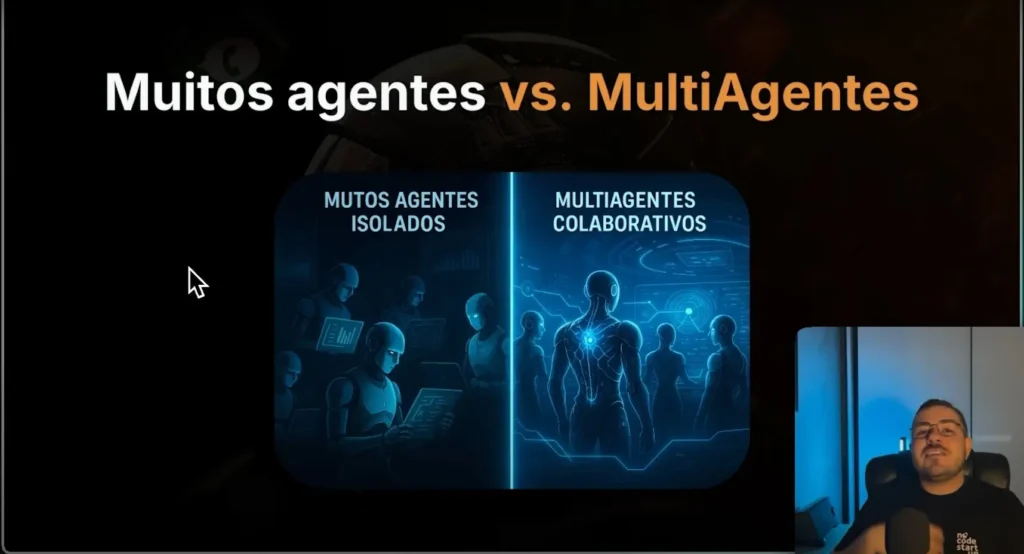What is postman?
Postman is an excellent tool for managing and testing APIs. In this Postman content you will learn how to take the first steps in tool to be able to test your APIs.
Postman is a collaboration platform for developing APIs (Application Programming Interfaces). It provides a user-friendly environment for developers to efficiently create, test, and document APIs.
Watch the full video on the channel where we teach you how to use Postman in practice:
The tool is widely used in the software development community to simplify the process of developing, testing and documenting APIs.
It is available as a desktop application and also has a web version.
Table of Contents
Why use postman?
Postman offers several tools and features, such as:
- API Tests: Allows developers to create and run automated tests to ensure their APIs are working correctly;
- API Collection: Groups related requests into collections, making it easier to organize and execute API calls;
- Environments: Allows you to easily switch between different development environments such as production, staging, and local to test APIs in different scenarios;
- Documentation: Offers the ability to create interactive documentation for your APIs, making it easier to share information with other developers;
- Collaboration: Facilitates teamwork by allowing developers to easily share their collections, tests, and documentation with teammates.
Example of integration and services
You can test different types of APIs in Postman, including:
- Basic API Testing:
- Use Postman to send an HTTP GET request to a public API, such as the Correios or the Post Office API. super hero, for information about heroes.
- API Authentication:
- Test authentication from an API, such as OAuth 2.0 or access token. Configure the appropriate headers in Postman to ensure the API accepts authenticated requests.
- Automated Tests:
- Create test scripts in Postman using the built-in testing functionality to automate checking API responses. For example, confirm that the response has a 200 status code or contains the expected data.
- Collection Creation:
- Group multiple related requests into a collection. For example, create a collection to interact with different endpoints of a social media API, including authentication, posting content, and getting feeds.
- Development Environments:
- Set up different environments in Postman to test an API in different scenarios like production environment, local testing environment, etc. This makes it easy to switch between server configurations.
In the video tutorial about postman we show practical API examples with Xano and with Supabase, which are large backends on the market.
Postman and Xano Backend
You can test Xano backend APIs using Postman. Xano is a platform that allows you to create application backends without having to write code, 100% nocode.
Here are the general steps for testing Xano APIs in Postman:
- Get API Information:
- In Xano, get the necessary information about the API you want to test. This may include the API URL, available endpoints, supported HTTP methods, and any required parameters.
- Open Postman:
- Open the Postman app on your desktop or access the web version.
- Create a New Request:
- Create a new request in Postman. Set the appropriate HTTP method (GET, POST, PUT, etc.) and enter the Xano API URL.
- Add Parameters and Headers:
- If the Xano API requires parameters or headers, add them to your request in Postman. This may include information such as API keys, authentication tokens, or any other necessary data.
- Send the Request:
- Send the request to the Xano server by clicking the “Send” button in Postman.
- Analyze the Answer:
- Analyze the response returned by the Xano server. Postman will show the status code, response body, and other relevant details.
You can watch our full video to learn how to do it in practice:

Postman and Supabase Backend
You can also use Supabase and API calls, for this you need to obtain Supabase credentials and integrate with Postman.
The rest of the process is very similar to that carried out in Xano.
How to learn nocode?
The best way to learn no-code is with No-Code Start-Up, here we have nocode courses from scratch to advanced, you can take our nocode courses FlutterFlow or Bubble.
See also the NocodePRO, where you have access to all NoCode StartUp content.






















